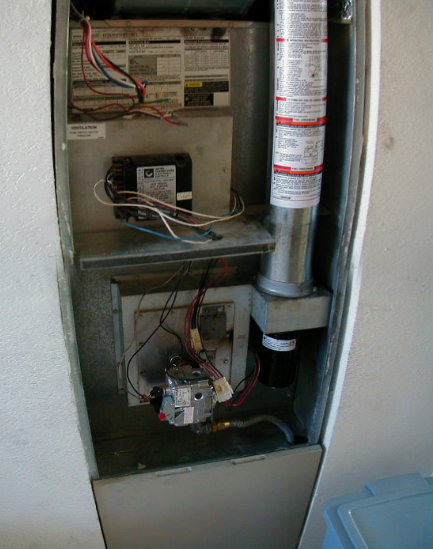
Adventures with a Furnace
Original Page: winter 2000
Furnace is Intertherm MMBB-90. Problems were excessive fuel consumption, strong unburned fuel smell, lots of soot on roof and in furnace, and most recently, poor and unreliable ignition. In 1998 and 1999 moths were a problem and filled up the intake air pipe, completely stopping air flow. This undoubtedly contributed to over-rich fuel burning which probably created a lot of soot. Moths may have also directly clogged the exhaust and radiator. However, none of our local help diagnosed this as being an exhaust problem. After looking at the flues and other systems, I determined that the exhaust must be clogged somehow. Discussion with Scott Meenen supported this. So, I finally knuckled down and pulled the heat exchanger/radiator system out of the furnace.
This is a shot of the overall furnace. This is the bottom half of the furnace. The pipe on the right with the warning stickers is the air intake- the combustion motor is just below it and it sucks air down the pipe and pushes it into the furnace. The burner unit is in the lower middle of the picture. For the past two years (but not this year), the air intake has been clogged up to about the bottom of the stickers with moths, and they've been packed solid around the fan rotor blades.

Top of furnace. The blower fan is right in the middle of the shot with the big square sticker. The combustion chamber sits below the fan, and the "radiator" hooks around and over it, to the right, behind the air intake pipe. The intake and exhaust flues are nested with the exhaust flue running inside the intake. You can just see them peeking out between the wall and top of furnace, just to the right of the white zip tie. The zip tie is tied to the fresh air intake for the fan.
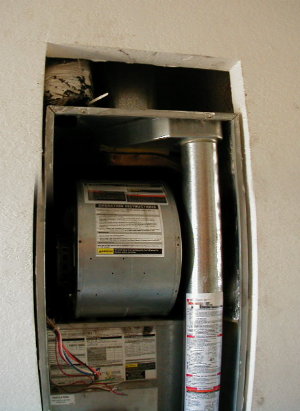
This is what the heat exchanger looks like:
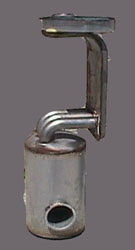
Here's part of the problem- soot all over the roof. And this is after I took the roof apart during the summer and scrubbed the metal as best as I could. Ain't no getting that stuff off. This is two winter's accumulation, much worse the second winter.
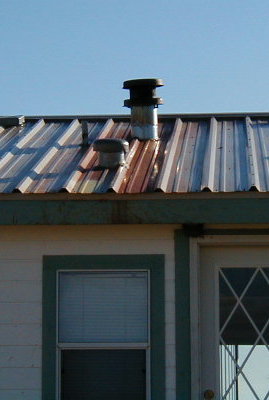
And of course it dripped down and got all over the side of the house
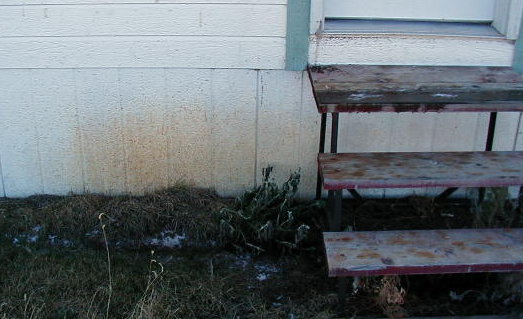
This is a shot of the combustion chamber pipes where they attach to the radiator (which is not water-filled, just a flat tube that curves over the blower fan). It's tough to see in this shot, but that screwdriver tip is buried in soot. All three pipes were almost completely clogged with soot. There was an open center about 1" in diameter and the rest of this 3" pipe was soot.
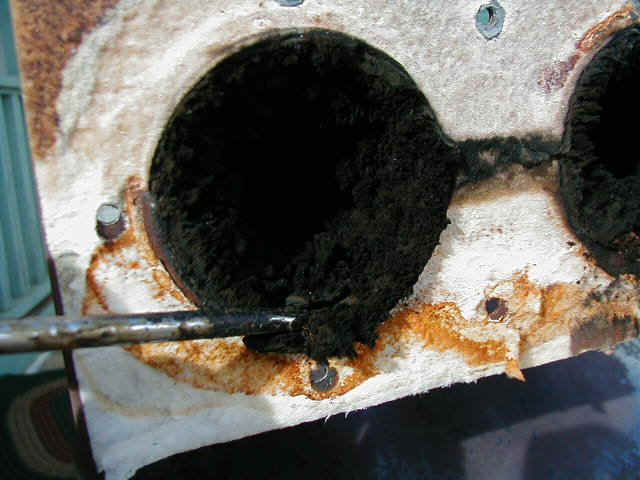
We cleaned this by lightly tapping on the pipes with a hammer, blowing thru them with a shop-vac, by running a brush up them, and by just letting them sit in the wind for awhile. We took out an incredible amount of soot, just huge flakes of the stuff. Here's an overall shot of the combustion chamber, pre-cleaning. I didn't get pictures of the radiator, but it also was clogged with soot, just like this.
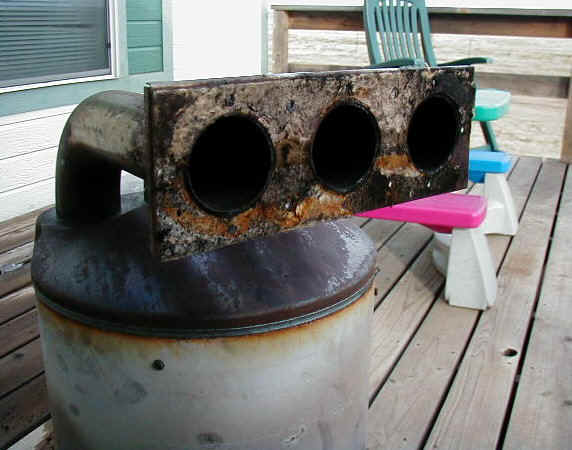
And here's what the pipes looked like after cleaning.
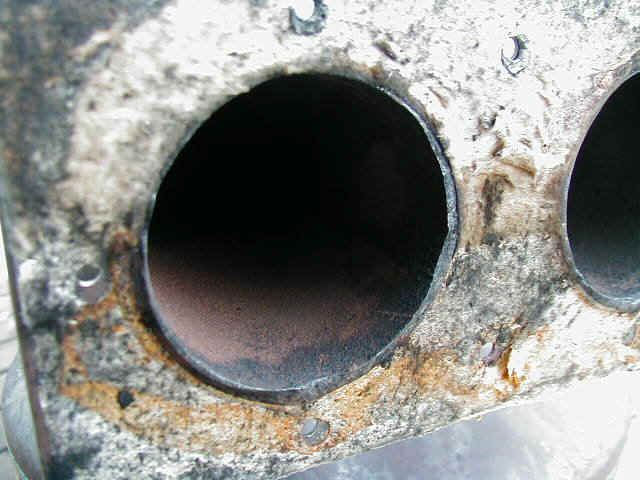
Here's a tired and dirty hard-working ranch hand after putting the furnace back together:
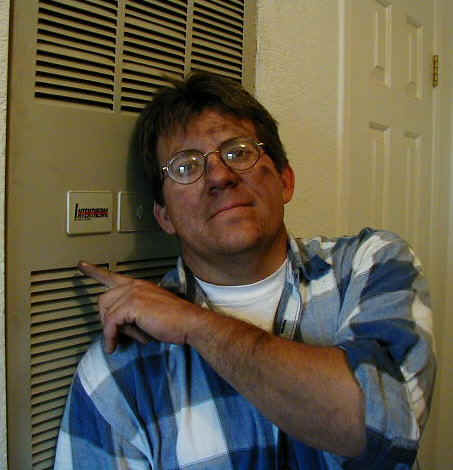
The very first thing I noticed was that while putting the furnace back together, I could feel outside air coming down the exhaust- I'd never felt that before, due to the clogged pipes. After double-checking everything, I turned it on and the next thing I noticed was that the burner lit on the first click of the igniter- it used to take 2-3 clicks. Peeking thru the viewport (I use a piece of glass to prevent blow-back), I noticed that the flame was huge and I could clearly see it being pulled into the chamber. It previously just sort of milled around inside- now it distinctly moves into the chamber. The blower motor came on almost immediately, whereas it previously took 30 sec-1 minute of heating time. And finally, the air coming out of the vents throughout the house is much warmer. After running the furnace for several minutes, I checked for hot spots, hot air where it shouldn't be, etc. and everything seems fine.
Since this page was originally created, we've cleaned the furnace twice more and we've now made it pretty much an annual event.